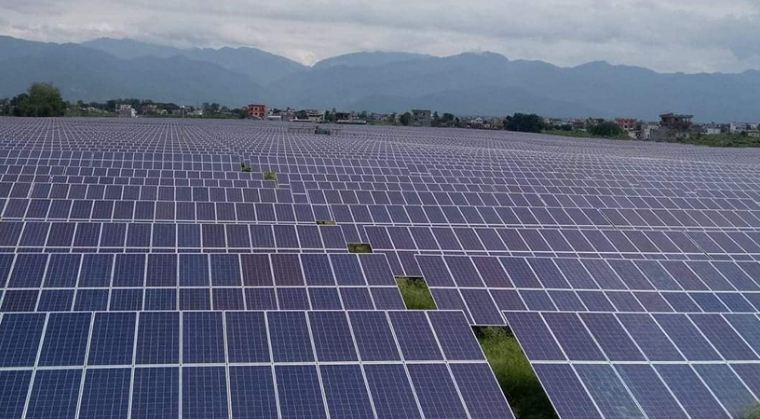PROMOTING DIVERSITY AND INCLUSION IN THE ENERGY SECTOR OF NEPAL

Significant energy disparities exist in the world, both between and within individual states as well as between affluent and poor countries. These disparities exist both in urban and rural areas, as well as within individual households. The Sustainable Development Goal-7 of the UN emphasizes the need for universal access to affordable, dependable, sustainable, and modern energy while also recognizing its key role in overall development. Deeply rooted structural variables including gender, caste, ethnicity, religion, language, and location, as in the case of Nepal as in many South Asian nations, contribute to unequal access to and benefits from energy resources. Energy poverty affects women, the poor, and marginalized groups more severely than it does relatively advantaged groups.
Nepal’s energy sector is at a pivotal juncture, with rapid growth and development taking place. As the country endeavors to meet its increasing energy demands and achieve sustainability goals, it’s crucial to address issues of diversity and inclusion within this dynamic industry. This blog explores the importance of promoting diversity and inclusion in the energy sector of Nepal, backed by accurate data and insights.
Nepal’s government, development organizations, and civil society have all implemented different policies and programs to alleviate these discrepancies. The degree to which these actions have actually improved the lives of the local community, particularly the women, the poor, and those who are marginalized, is still unknown. In addition, Nepal must simultaneously provide fair energy access and address the distributive effects of the development of the energy sector while increasing its energy resources to achieve its ambitious economic plan. The purpose of this study is to offer a thorough examination of GESI (gender equality and social inclusion) problems in Nepal’s energy sector. It looks at the prospects and challenges of closing the energy gap and ensuring fair access to and benefits from energy for all societal groups.
The Current Landscape:
Nepal’s energy sector primarily consists of hydroelectric power, followed by solar and wind energy. Despite its significant contribution to the nation’s economy, the sector has traditionally faced challenges in promoting diversity and inclusion.
Gender Disparity:
In the energy sector, there has been a noticeable gender gap. According to the World Bank, as of
2021, women constituted only about 21% of the workforce in Nepal’s electricity sector. This underrepresentation of women in energy roles underscores the need for gender diversity.
Rural-Urban Disparity:
Another aspect of diversity relates to geographic inclusion. Nepal’s energy infrastructure development has predominantly favored urban areas, leaving rural regions with limited access to reliable electricity. Bridging this gap is essential for overall inclusive growth.
Promoting Diversity and Inclusion
Gender Inclusion:
Initiatives aimed at increasing the participation of women in the energy sector are crucial. Encouraging more women to pursue careers in engineering, renewable energy, and management roles can diversify the workforce.Encourage and prepare young women in Nepal to pursue a career and take on leadership roles in the energy sector by increasing their access to information and opportunities.Providing mentorship, scholarships, and support for women in STEM education is a vital step.
Geographic Inclusion:
Expanding energy access to rural and remote areas is not only an inclusive move but also contributes to poverty reduction. Off-grid renewable energy projects, like solar mini-grids and micro-hydro schemes, can play a significant role in this context.
Inclusive Policies:
The government of Nepal has a pivotal role in shaping policies that promote diversity and inclusion in the energy sector. This includes creating an enabling environment for women and marginalized communities to participate in decision-making processes and access funding opportunities.
Benefits of Diversity and Inclusion
Innovation: Diverse teams bring a range of perspectives, fostering innovation and creative problem-solving. In the energy sector, this can lead to the development of more efficient and sustainable technologies.
Economic Growth: Expanding energy access to underserved regions can stimulate economic growth. As rural communities gain access to electricity, opportunities for entrepreneurship and employment increase, contributing to poverty reduction.
Social Equity: Promoting diversity and inclusion in the energy sector aligns with the principles of social equity. It ensures that benefits and opportunities are distributed more equitably among different segments of society.
Conclusion
Promoting diversity and inclusion in Nepal’s energy sector is not just a matter of social justice; it’s also a strategic imperative for the nation’s sustainable development. By addressing gender disparities, bridging geographic gaps, and implementing inclusive policies, Nepal can harness the full potential of its energy sector while leaving no one behind. It’s a journey that requires collaboration among government, private sector, and civil society, and it’s a journey worth taking for a brighter and more equitable energy future.




